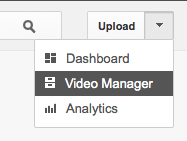Kids Learn to Code
Having a computer science background myself might explain why I always get so excited when it comes to coding. In my good old days, I learned to program in computer languages such as COBOL, Fortran, Basic, Pascal, 6502 Assembler, and Logo. Each problem I was faced with represented a new programming challenge. Bring it on! Well, many years have passed since then and throughout them I became more involved with education, which is why I appreciate even more how programming (or coding as it is commonly known now) can benefit children. Knowing that coding can develop important lifelong skills in children makes me even more excited! Imagine being able to develop critical thinking, problem solving, creativity, logic, abstract thinking, design, experimentation, and algorithmic thinking, in a fun, play-like way.
What is coding?
Computer applications and games, Apps, websites, etc., have all been developed through coding. In short, coding is putting together instructions (or commands) to tell the computer or device what to do. For instance, this picture shows a snippet of the code that powers a Google Search web page. You don’t have to be a computer geek in order to code. There are much simpler ways, like what kids at school are doing.
Coding in Elementary
The Hour of Code was launched in 2013 with the goal to promote Computer Science in schools. In its first year, ASFM students participated during their technology class of the week. This meant only students in grades Kinder to 5th were able to participate. In the 2014 edition, the Tech Integration team went a step further and included students as young as Nursery and PreKinder, through the unplugged version of coding. Additionally, we invited all teachers to participate individually.
In Nursery, Pre-Kinder, and Kinder we decided to run an unplugged activity, in which no computer or device was needed. The goal was to practice very basic programming commands, such Forward, Back, Left turn and Right turn. We worked with arrows only. We introduced the concept of coding by making an analogy between how an author is the person that writes books and a programmer is the person that creates computer games. Their task was to become the “programmer” of a “robot”. After modeling how the robot was programmed, it was the child’s turn to pretend being a robot and a programmer. They just loved it!
FIrst and second grade students experienced coding with Tynker (http://www.tynker.com). A website that is just right for kids their age in which they learn how to create games.
Third, fourth, and fifth grade students spent the hour practicing the recommended coding sites from the Hour of Code web site. When finished with all the expected levels, they received a certificate from Code.org.
Teachers were also encouraged to participate by doing the “Hour of Code Challenge”, a special in-house challenge just for teachers. All teachers that engaged in at least one hour of coding entered a raffle for a chance to win one of three custom made trophies.
Apart from the Hour of Code week, all year round, elementary students continue to learn to code. Kinder and Prekinder students enjoy working with special iPad apps that develop coding skills, such as Bee-Bot and Daisy Dinosaur.
Students in grades 3-5 work with Scratch, an online and computer based application in which children use block programming to create stories, games, and animations.
As an end of unit Tech Class project, grade 5 students working in small groups created their own computer games. They did an amazing job and the games turned out to be so fun and creative! These are snapshots of some of the games they designed using Scratch.
Why coding?
As you can see, computer programming has come a long way. Programming is not only exclusive for the computer geeks, but is available to everyone now. I believe that if children in their early years are given the opportunity to learn to code and program, they can develop thinking skills that could help them grasp difficult concepts or procedures in their future. Learning to code is one more step in becoming digitally literate. Imagine if this knowledge could help you become more efficient and effective by turning your computer into a much more powerful tool!
Recommended Sites
Recommended iPad Apps
Cheers!



Comments
Post a Comment